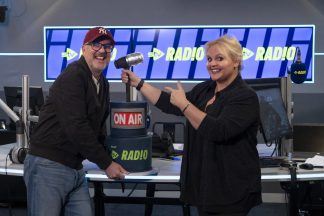Tiny robots that can be injected into the human body and used to perform complex tasks could “open new frontiers in medicine”, scientists have announced.
In a study co-led by the University of Edinburgh’s School of Engineering, researchers showed the technology could be used to treat bleeds in the brain caused by aneurysms, which cause about 500,000 deaths globally each year.
An aneurysm is a blood-filled bulge on a brain artery that can rupture and cause fatal bleeds, or lead to stroke and disability.
In lab tests using model aneurysms and rabbits, the team engineered magnetic nanobots made up of blood-clotting drugs encased in a coating designed to melt at precise temperatures.
They injected several hundred billion of the bots, each about a twentieth of the size of a red blood cell, into an artery, and then remotely guided them to the site of the aneurysm using magnets and medical imaging.
Once the swarm of tiny bots was in position, researchers used magnets to cluster them together and heat them to their coatings’ melting point, thereby releasing the drug at the precise point where it could prevent or stem bleeding into the brain.
Dr Qi Zhou of the University of Edinburgh’s School of Engineering, who co-led the study, said: “Nanorobots are set to open new frontiers in medicine, potentially allowing us to carry out surgical repairs with fewer risks than conventional treatments and target drugs with pinpoint accuracy in hard-to-reach parts of the body.
“Our study is an important step towards bringing these technologies closer to treating critical medical conditions in a clinical setting.”
Researchers said the study showed nanobots had the potential to transport drugs to precise locations without risk of leaking into the bloodstream, which they said was a key test of the technology’s safety and efficiency.
They also said the nanobots could reduce the need for implants in the treatment of brain aneurysms, such as coils or stents (mesh tubes).
In turn, they said, this would reduce the risk of implants being rejected by the body, and curb reliance on anti-blood-clotting drugs, which can cause bleeding and stomach problems.
They added that it can also take hours of painstaking surgery to get an implant to the aneurysm, because of the need to navigate a complex network of small blood vessels in the brain.
The study, published in the nanoscience and nanotechnology journal Small, was led by a team from the UK and China.
The same team has also developed nanorobots to remove blood clots, which they said also showed their potential in the treatment of strokes.
Follow STV News on WhatsApp
Scan the QR code on your mobile device for all the latest news from around the country


 PA Media
PA Media


























